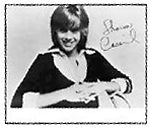THE FIRST TIME I heard the name Hoagy Carmichael, I scratched my chinit was college, and I rarely shaved, so my face itched a lotand thought, “Ah yes, the Black Power activist.” Luckily, I kept my mouth shut long enough to realize that I was actually thinking of Stokely Carmichael, the famous civil rights leader.
Who, then, was this Hoagy Carmichael?
Since I was attending music school in Bloomington, Ind.where Hoagland Howard Carmichael was born on Nov. 22, 1899it wasn’t long before I had my answer. As a songwriter, his catalog includes the jazz standards “Stardust,” “Skylark,” and “Lazy River.” Hoagy also appeared in the silver-screen classics Young Man With a Horn and To Have and Have Not. Along with former IU basketball coach Bobby Knight and rocker John Mellencamp, Carmichael is one of Bloomington’s most revered citizens ever.
Over the years, countless artists have been drawn to Carmichael’s catalog. R&B star Ray Charles spawned a No. 1 hit in 1960 with his definitive rendition of “Georgia on My Mind.” Most recently, Mellencamp included a souped-up version of the 1942 obscurity “Baltimore Oriole” on Trouble No More, his superlative set of rootsy covers. There are approximately 1,300 recorded versions of “Stardust” worldwide, despite the song’s unconventional structure and melodic line, which by all reasoning should have scared audiences away in 1929.
Yet there is no set of Carmichael covers more peculiar than those of the Stark Reality. But we’ll get to that.
IN THE MID-’40S, the composer enjoyed an unexpected minor hit with “The Whale,” a children’s song in 6/8 time featuring words by the poet Geoffrey Dearmer. Inspired, Carmichael continued setting children’s verses to music up till 1946, when he put the project aside. A decade later, he wrote a handful more, around texts by A.A. Milne and others. These compositions were eventually anthologized and published, but received little notice. In 1958, the singer-pianist included a few on his album for small fries, Hoagy Carmichael’s Havin’ a Party; later, he made an unsuccessful attempt to have Indiana public schools incorporate them into the curriculum. Then, nothing.
Fast-forward to 1968. Carmichael’s son Hoagy Bix (named for Carmichael’s bosom buddy, Bix Beiderbecke) was working at Boston public television station WGBH. The younger Carmichael was always seeking ways to keep his father’s name out there, and remembered the children’s songs. “I’d always loved them and was determined to get them out there in any way I could,” he recalls in Richard M. Sudhalter’s biography Stardust Melody. So it was that Hoagy Carmichael’s Music Shop, a 15-minute TV program featuring the composer using the songs to teach kids music theory fundamentals, was born.
To put a contemporary spin on the material, Hoagy Bix enlisted an interracial funk-rock outfit, the Stark Reality, which had recently contributed the theme song to WGBH’s Say Brother, a groundbreaking show aimed at black viewers. Led by vibraphone player Monty Stark, who gave his instrument a psychedelic edge via a series of fuzz boxes and pedals, the quartet took Carmichael’s songs to a whole new dimension. And although the show only ran for a single season, the producers were impressed enough to bankroll an album, The Stark Reality Discovers Hoagy Carmichael’s Music Shop.
Three decades later, those crate- digging fools at Stone’s Throw Records have rescued this bizarre confluence of musical generations. The label’s new Stark Reality retrospective, Now, features the group’s Carmichael LP in its entirety, along with three unreleased demos and the Say Brother theme. And it is so “out there” that I shouldn’t have been shocked to see a satellite whizzing past my head upon first listen. The lumbering opener, “Junkman’s Song,” comes on like Hendrix on a bender, full of effects-laden guitars and waves of distortion, while the brief vocal section of “Thirty Days Hath September,” a weird yet mesmerizing chant, suggests the Sun Ra Arkestra taking a swipe at a Disney tune. Somehow, the slippery bass lines of Phil Morrison keep even the most outr頣uts from going off the tracks. Stark’s arrangements certainly test the limits of Carmichael’s originals, but they never cut the heart out of them, and the ensemble always brings kid-friendly zeal to the sung portions.
What did Carmichael think of all this madness? According to Hoagy Bix’s liner notes, his father loved these recordings. Show business had changed plenty during the elder Carmichael’s career, and in his twilight years, he made no pretense of digging the Jefferson Airplaneor grasping the Stark Reality 100 percent. “But he heard the musicality, he heard the chops,” Hoagy Bix writes. “And he bought into the chops. He liked the way these kids were playing his children’s songs.” And so will open-minded funk enthusiasts today . . . even if they have no idea who Hoagy Carmichael is.






